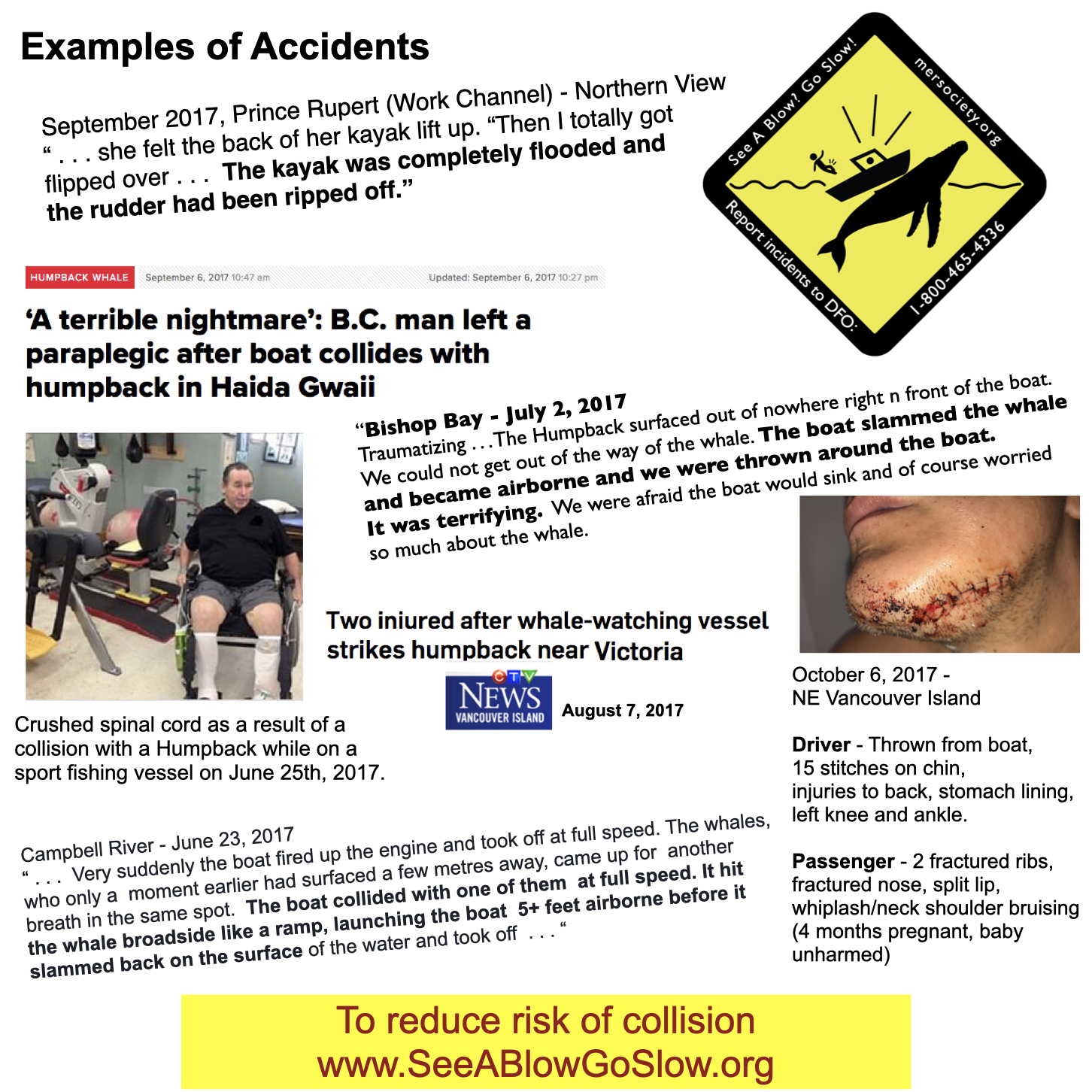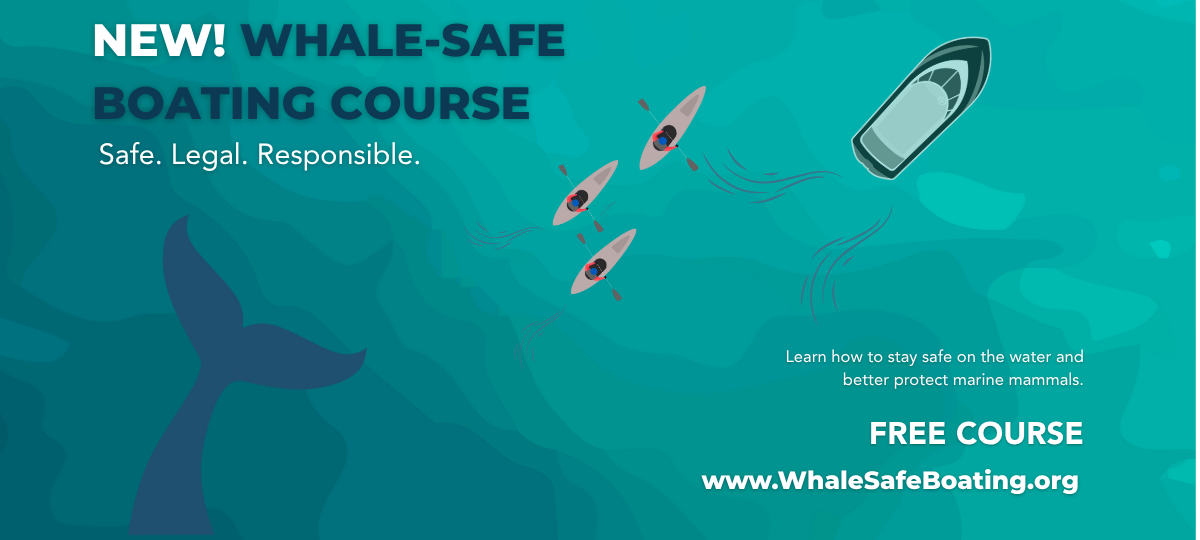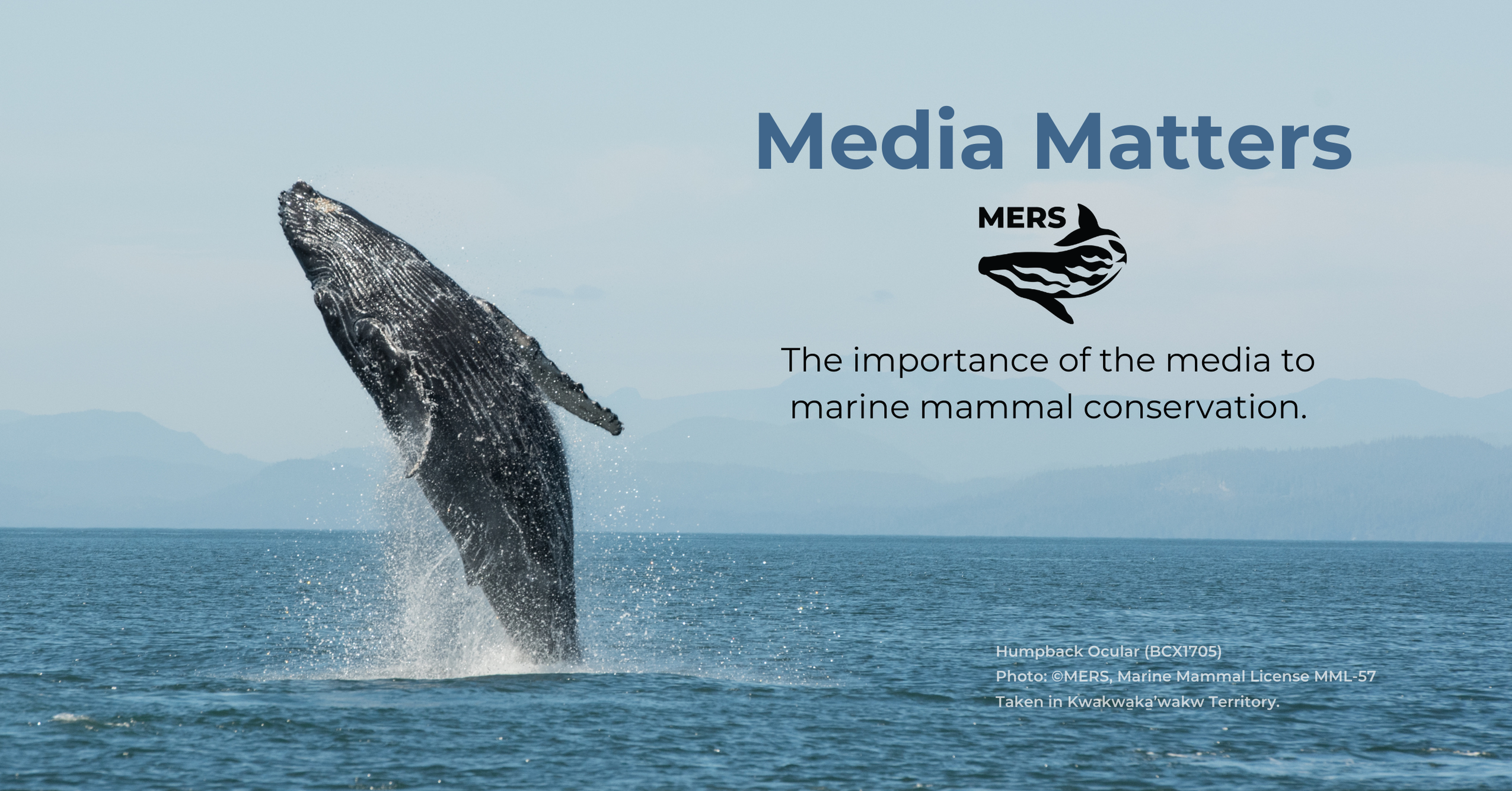Last update: August 6, 2023
This information is being provided:
1) As background for boaters to better understand these interactions and the importance of avoiding them when possible.
2) Because of concerns about the ethics of promoting such encounters
3) Because we are keeping track of which whales do this and under which circumstances. Data contributions are valued. Please see www.mersociety.org/data.
As much as it is true that Humpbacks can be astoundingly oblivious of boats, there are some Humpbacks that occasionally interact with boats. Both cases have the potential for extreme risk to the whales, and to boaters (see www.SeeABlowGoSlow.org).

Why are there interactions like this? And, what are the best practices for boaters / tour operators when this happens?
We strive to document these interactions and which individuals are involved. While we know of a small number of individual Humpbacks who interact with boats, it appears such interactions may be more likely when the whales are socializing with one another. Not surprisingly, these interactions are more likely when the whales are not directed at feeding.
Is habituation a factor? It may be that some Humpbacks have had previous encounters with boats which perpetuates these interactions. For some Grey Whales, it is believed that they have become accustomed to the interactive whale watching practices in Mexico and thereby approach boats when off the coast of British Columbia.
It certainly is a concern that with each boat interaction, the behaviour may be reinforced and that this increases the risk of collision.
But human behaviour is of course also a concern. Many boaters do not know about the increase of Humpbacks we are so fortunate to have off the coast of British Columbia and just how unpredictable this large whale species can be.
Risk of collision is increased if boaters believe that Humpbacks always know where vessels are.
Baleen whales like Humpbacks do not have the biosonar that toothed whales have. They can surface suddenly after long dives, can become highly acrobatic, are often travelling in random patterns, and can be oblivious of boats.
Risk of collision (and habituation) is also increased if the promotion of such interactions leads to increased demand/expectation for close encounters with whales.
It is a best practices policy of the North Island Marine Mammal Stewardship Association not to promote imagery of whales in close association with vessels. (See the end of this blog for more detail on the NIMMSA Code of Conduct).
The sampling below gives a sense of the human injuries and material damage resulting from collisions. Note that it the law that collisions and entanglements must be reported to DFO (1-800-465-4336) which will allow for better potential to reduce the risks.

How often do the whales die as a result of collision? Dead whales most often sink to the ocean bottom so this is not known.
What to do if Humpbacks choose to interact with a boat, despite all attempts not to put the whales at risk and contribute to their habituation? Put engines in neutral and ideally turn them off and lift them till the whale(s) are beyond 200m and no longer appear to be advancing toward the boat.
In light of the information above, there is then the moral dilemma for boat operators (and media) about whether to promote such interactions and how they are promoted. The NIMMSA guidelines below and the information at www.SeeABlowGoSlow.org may be of use in this regard.
NIMMSA Viewing Guidelines include:
“Keep a distance of at least 200 metres if any whale shows signs of trauma, stress, labour, unfamiliar behavior, habituation towards people or vessels, or the need for extra space.
If a whale approaches a vessel (regionally known as “mugging”) the vessel should turn off their engines and wait for the whale to move outside of 100m. If a vessel captain is aware of another vessel being “mugged” or a whale in the area that is known for mugging vessels, the captain should avoid the area.”
NIMMSA Marketing and Social Media Guidelines: 
“As stewards, it is important NIMMSA members set realistic marine mammal viewing expectations and educate others on best marine mammal viewing practices. To help achieve this NIMMSA members are expected to follow the below marketing and social media guidelines.
- Only use images or video in marketing material and on social media that reflects responsible marine mammal viewing in line with this Code of Conduct.
- Educate clients on the importance of responsible marine mammal viewing and encourage them to only post images or video to social media that reflect operations in line with this Code of Conduct.”
The North Island Marine Mammal Stewardship’s full code of conduct can be accessed at this link.


